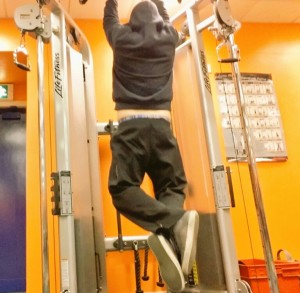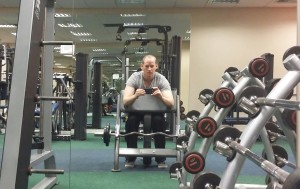Easy Ways to Incorporate Isometrics into your Workouts
If your training has stalled a little or you feel like you need to get more out of your workouts, you probably need a new approach. If you’ve been training for more than six months, you might notice that it gets harder to make strength and muscle gains.
One way to do this easily is to incorporate isometrics into your normal weights workout. I’m a big fan of 5/3/1 but any training system can be modified to use isometrics. You can even use just your body weight.
What the heck are ‘Isometrics’?
Regular weight training involves moving the weight from point A to point B and back. Normally this is repeated several times, leading to the phrase ‘pumping iron’.
However isometrics are different as they involve holding or contracting the muscles in a fixed position for time. One of the most well known isometric exercises is the plank which, if done correctly, works the entire core.
Some people have devised whole workouts that consist of isometric exercises.
However, here at TDD, we’re busy Dads and always looking for tricks that are going to save us time. Which is why I like to incorporate isometrics into my existing workout. Keep reading to find out how.
Is it going to hurt?
Yes, isometrics will hurt.
As will most exercises.
If you don’t like being a little bit sore after a good workout, this probably isn’t the site for you.
There are many benefits to incorporating isometrics into your workout. My main ones would be:
- Increased muscle stimulus leading to new growth
- An improved mind-muscle connection
- Improve muscle pump
All good stuff right? I like to use isometrics towards the end of my workout to give me a feeling of muscle burnout, knowing that I’ve worked hard.
Isometrics are different than paused reps. These involve pausing for one or two seconds at the ‘top’ (peak contraction) of each movement. Paused reps also hurt but that’s for another article..
Doing isometric exercises can also make you look like a badass. Check out Chad Waterbury’s video on the single arm hold:
That’s all fine, but how can regular Dads incorporate isometrics into their existing workouts without adding time or extra sessions?
How can I Incorporate Isometrics into my Workouts?
I like to keep things simple. This means I don’t do any isometric circuits or special workouts. Right now, I do 5/3/1 which includes a choice of assistance exercises.
When I do my assistance, I’ll incorporate isometric holds into these exercises. Here are my top three:
1. Pull ups
Pull ups are possibly the king of the bodyweight exercise. A while ago, I couldn’t do a single pull up. So I decided to just start doing them. All the time. Now I can do them.
One of my favourite variations is to do an isometric hold on the last set. Using either a neutral (parallel) or pronated (over-hand) grip, pull yourself up to the top position and hold. You can either hold for time or until failure.
I prefer failure as this will be influenced by how hard you’ve worked. Hard work = short time to failure. As you hold, you’ll start to feel your core and back tighten and contract.
Squeeze back – this will increase the stretch and increase muscle breakdown.
Do this another two times.
2. Machine Leg Extensions
Machines can’t replace free weights in my opinion. But when it comes to targeting your quads, nothing beats the leg extension machine.
On your last set, lift and hold in the ‘legs extended’ position. You’re knees shouldn’t be locked out. Feel the contraction in your quads. Hold for 20 to 30 seconds and release slowly. Repeat three times.
If you’re a masochist, you could do this to failure too.
Just don’t expect to be very mobile for a day or two afterwards.
3. Preacher Bench Curl
I’ll hit the preacher bench last in my workouts and only if I have time. Pull ups and rows build biceps better than an EZ bar in my experience.
This is a great way to get the most of your precious time without looking like a curl-bro. The preacher bench prevents a lot of cheating so it’s great for this exercise. You’ll probably need to go lighter than your pump weight. And this is going to hurt so there will be some serious sucking it up involved.
Curl the bar (or dumbbells) up until your at the top of the movement. Don’t go too far as you’ll lose the contraction. Hold for 20 seconds or failure – whichever comes first.
Rest for 30 seconds and repeat three times. As you hold the exercise, imagine your biceps contracting and filling up like balloons. I find this really helps improve the contraction and stretch.
Final Thoughts on Isometrics
Isometrics are fairly advanced techniques. That’s why I wouldn’t recommend using isometrics unless you’ve been training seriously for at least six months. It takes time to develop the mind muscle connection required to get the most out of these exercises.
If you try these exercises and like them, let me know.
Also if you liked this, check out some of my related articles:
- How to find a new gym
- Why the Dad-Bod is a disease for Dads
- How to warm up quickly and efficiently – time saving tips



Great post Neil I will definitely try Isometrics out when I am going to smash my next workout!
Good stuff Timo, let me know how you get on